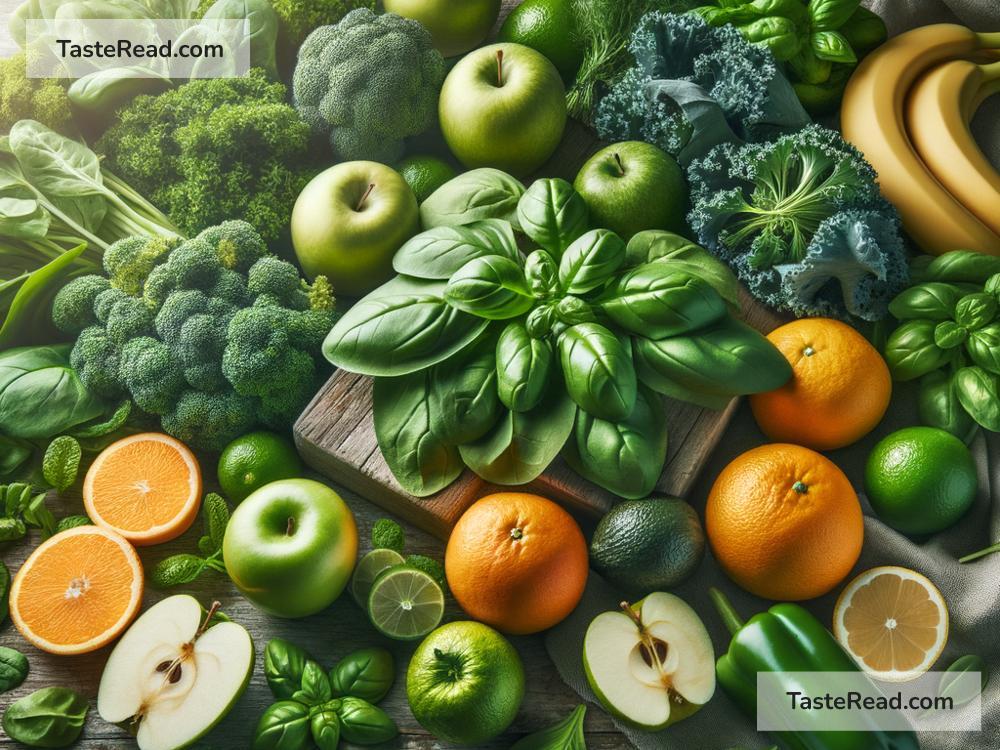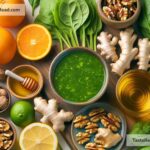Foods for Improving Air Quality: How Your Diet Can Help the Environment
Clean air is essential for our health, happiness, and overall well-being. Breathing in polluted air can cause serious problems for our lungs, heart, and brain. However, what many people don’t realize is that the food we eat can play a role in helping reduce air pollution and improve air quality. By making smarter choices about what we eat, we can contribute to cleaner air and a healthier planet.
This blog will explore foods that can help improve air quality by promoting sustainable farming practices, reducing greenhouse gas emissions, and minimizing harmful pollutants. Ready to dig in? Let’s get started!
How Food Choices Affect Air Quality
The air we breathe is impacted by the way food is grown, transported, and consumed. Some agricultural practices produce pollutants like carbon dioxide, methane, and ammonia, which harm air quality and contribute to climate change. For example:
- Meat production (especially beef and lamb) generates significant amounts of methane because cows produce this gas while digesting their food. Methane is a powerful greenhouse gas that contributes to air pollution.
- Fertilizers used in farming release ammonia and nitrous oxide, which can damage ecosystems and create smog.
- Large food industries often use fossil fuels to power transportation, factories, and storage, creating more carbon emissions.
By choosing foods that are grown sustainably and have a lower environmental impact, you can indirectly help improve air quality.
What Foods Are Best for Air Quality?
If you’re wondering what to eat while helping the planet, here’s a list of eco-friendly foods that promote better air quality:
1. Plant-Based Proteins
Beans, lentils, chickpeas, tofu, and other plant-based proteins are great alternatives to meat. Growing legumes requires less land, water, and energy compared to animal farming. Plus, they emit far fewer pollutants, making them a cleaner option for the air we breathe.
2. Seasonal and Local Produce
Fruits and vegetables that are grown locally and in season have little need for transportation or refrigeration. This reduces fossil fuel emissions that pollute the air. Local farmers also tend to use more sustainable practices, which means fewer chemical fertilizers and pesticides are released into the environment.
3. Organic Foods
Choosing organic foods can make a big difference. Organic farming avoids the use of synthetic fertilizers and pesticides, which release harmful chemicals that affect air quality. Organic farming also helps improve soil health, which plays a role in absorbing carbon dioxide from the atmosphere.
4. Whole Grains
Oats, quinoa, brown rice, and whole wheat are nutritious and eco-friendly options. Whole grains require less intensive farming compared to processed foods and meat products. They also produce lower amounts of greenhouse gases.
5. Nuts and Seeds
Almonds, walnuts, chia seeds, flaxseeds, and sunflower seeds are excellent foods for both your body and the planet. Growing nuts and seeds typically results in fewer air pollutants compared to animal agriculture. Just be mindful of choosing sustainably grown varieties, especially for water-intensive crops like almonds.
6. Seaweed
Seaweed is a superfood that not only benefits your health but also helps the environment. Seaweed absorbs carbon dioxide and releases oxygen, improving air quality underwater and above. It can be grown without fertilizers or soil, making it an eco-friendly food choice.
7. Vegetables with Low Environmental Impact
Root vegetables like carrots, potatoes, and beets are often better for the planet because they require less energy and water to grow. Leafy greens, broccoli, and zucchini are other examples of vegetables that support sustainable agriculture.
Tips for Eating Sustainably
Now that you’ve got the list of air-friendly foods, here are some additional tips to maximize your impact:
- Reduce Food Waste: Wasted food contributes to air pollution because it releases methane as it decomposes in landfills. Only buy what you need and compost leftovers when possible.
- Choose Smaller Portions of Meat: If you’re not ready to give up meat entirely, start by reducing your intake. Even small changes, like skipping meat one or two days a week, can lower your contribution to air pollution.
- Support Farmers Markets: Buying directly from local farmers helps reduce transportation emissions and supports sustainable practices.
- Cook More at Home: Preparing meals at home cuts down on packaging waste and helps you control the ingredients you use. Processed and packaged foods often require more energy to produce, transport, and store.
- Learn About Sustainable Labels: Look for certifications like “Fair Trade,” “Organic,” or “Rainforest Alliance” that signal environmentally friendly farming.
Beyond Food: The Bigger Picture
While eating the right foods is one way to improve air quality, it’s important to remember that cleaning the air takes teamwork. Governments, businesses, and individuals all need to work together to push for cleaner energy sources, sustainable farming, and better transportation systems.
Still, small actions matter greatly, especially when millions of people adopt changes. By carefully choosing what you put on your plate, you’re sending a message that a cleaner, greener world is worth fighting for. Over time, these choices can lead to big improvements for both air quality and the planet.
Conclusion
The food we eat has more power than we think. By choosing plant-based proteins, seasonal produce, organic food, and other environmentally friendly options, we can reduce pollution and improve air quality. Every meal you prepare is an opportunity to make a positive impact on your health, your community, and the Earth.
So, next time you shop for groceries, think about how your choices affect the air we breathe. Together, we can work toward cleaner skies—and a brighter future for everyone.


